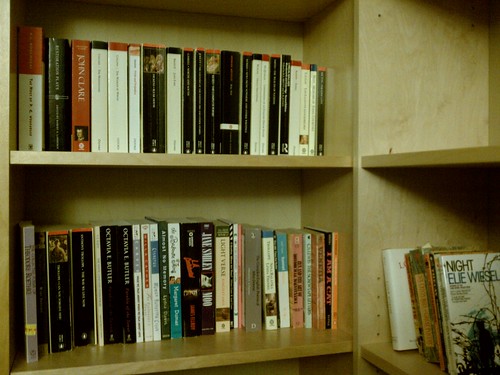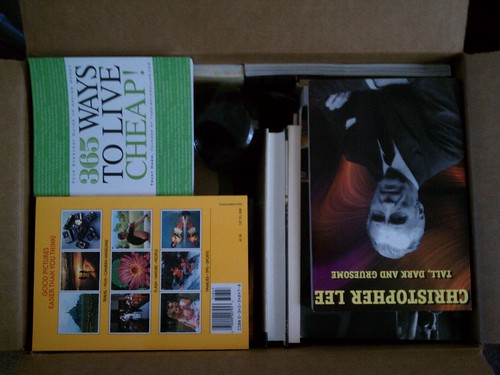So, you’ve prepared, packed, schlepped, unpacked, and organized your library. You’re probably beat!
Make It Yours
Once you’ve taken a break, though, it’s nice to add a few finishing touches. These are entirely personal, and offer you a chance to add your own flair to your collection.
- Maybe you’re the Spartan type, and just want the books and shelves.
- Or maybe you’ve got a green thumb, and want to tuck a few potted plants here and there.
Tip: put your plants in plastic pots that then sit inside larger, sealed pots, rather than using pots with saucers. This will keep overzealous watering from dribbling all over your precious books! - Do you collect something interesting? Why not display some of your collection in the extra space on your shelves (if any!) or on top of your bookcases?
- If your bookshelves are bracket mounted, you can hang things from the brackets.
Your imagination is the limit! Well, your imagination and a little common sense.
DO NOT:
- Light candles in your bookcases.
I know, this seems obvious, but it happens. Even tall shelves and short candles can spell DISASTER. At best, you wind up with bubbled veneer or smokestains. At worst, your place burns down. - Have anything containing water in your bookshelves unless you take thorough precautions to prevent capsizing/spillage.
- Leave bottom shelves empty, especially if you live in earthquake country.
You want your bookcases to be bottom-heavy, not top-heavy. Even the best safety strap is no match for a tall bookcase loaded with heavy books at the top and little or nothing at the bottom if a big quake hits.
Earthquakes
Speaking of quakes: it’s very, very important to fasten your bookcases to the wall. It’s easy to be careless, especially if you’ve shimmed your bookcases so they’re leaning against the wall, but any bookcase over 3 feet tall should be attached to the wall. There are loads of ways to do this, from safety strapping to little l-brackets, but it has to be done.
Stacking short bookcases isn’t recommended, and if you do it, be sure to secure them well. I watched as two stacked bookcases adding up to over six feet high faceplanted during a big quake when I was a kid, and have never forgotten the sight. Nobody was hurt, but the books were a bit damaged and it was scary as heck.
It’s important to secure your bookcases even if you don’t live in earthquake country. Small kids often think bookshelves look like fun to climb and can be injured when the bookcase overturns. Yikes!
It’s even worth considering installing elastic straps to make sure your books don’t come off the shelves during a quake. The professors at my college all had built-in bookcases in their offices lining the walls, floor-to-ceilling, and every shelf had a thick elastic cord running across it in the middle. It was easy to move out of the way to get a book when you wanted it, and ensured that the profs wouldn’t be crushed under their libraries if a big quake hit. Plus, lots of professors tucked things between the straps and the books as a sort of ersatz bulletin board. Win all ’round!
What About You?
How do you decorate your bookcases/bookshelves? What safety measures have you taken?

